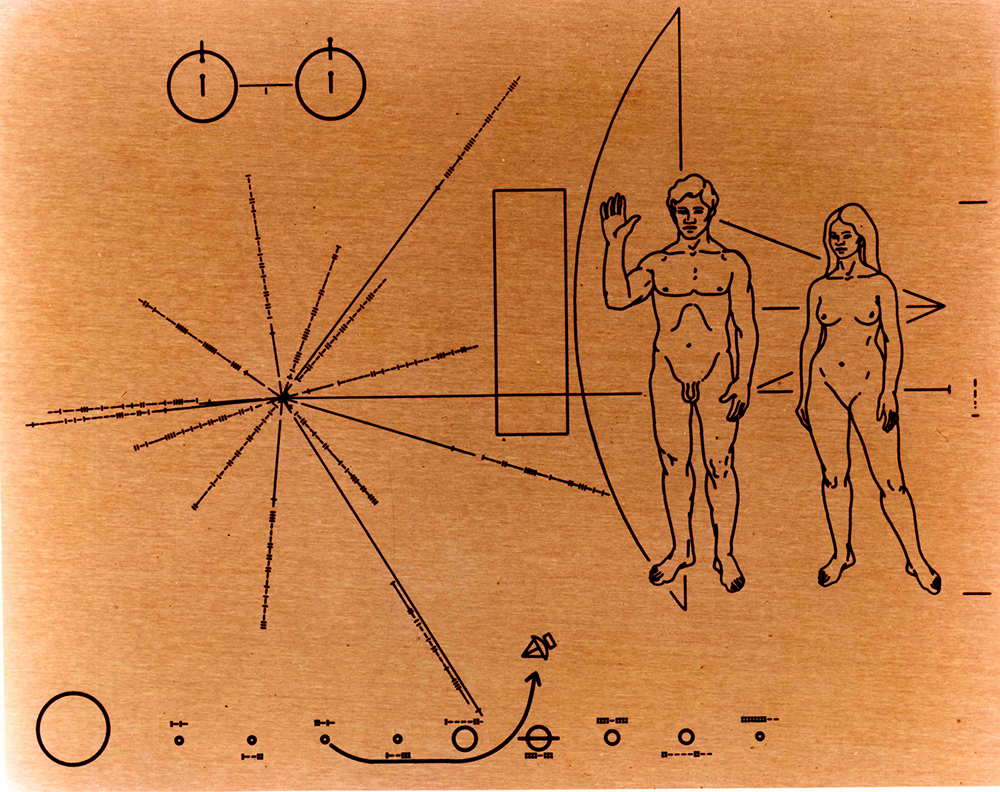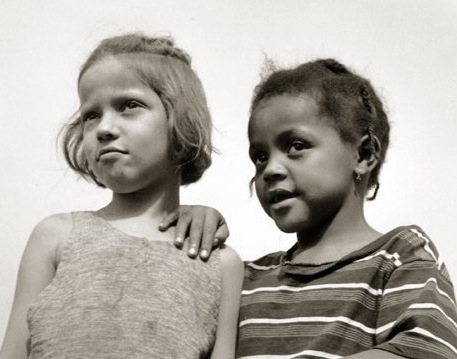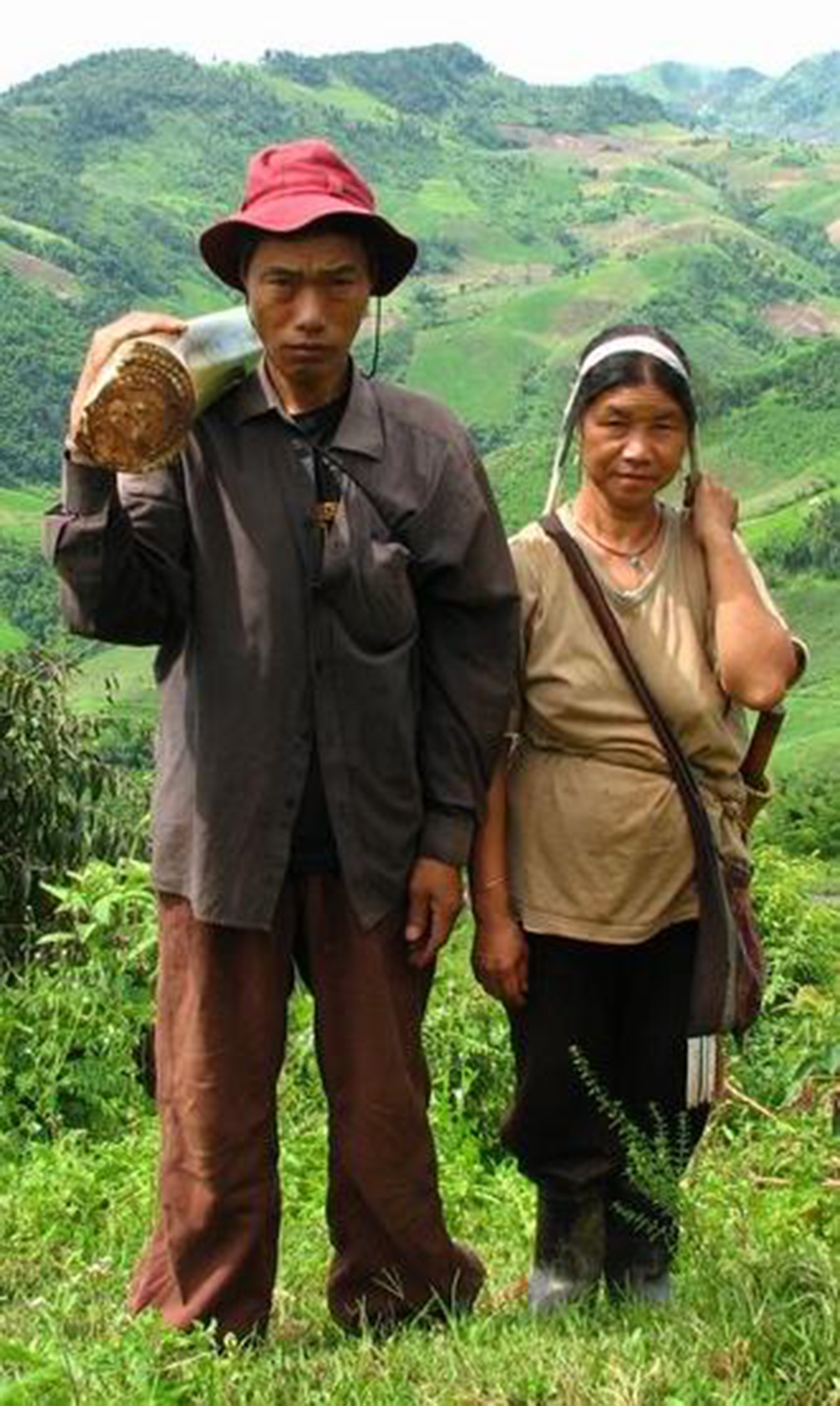You’ve been tasked with representing the whole of humanity in an image. What do you do? If you’re anything like Carl Sagan, who was asked to design such an image to be launched with NASA’s Pioneer spacecraft, you would draw an image of a male and female human in the nude, as was etched onto the Pioneer plaque in the 1970s, before they were launched into a Solar System-escaping trajectory.
While the Voyager Golden Records contain a lot more information, for the unlikely event that they are picked up by alien civilizations or future human civilizations, the Pioneer plaque only had one image to represent humanity, and this is what we ended up sending to represent the whole of our species, designed by Sagan, his wife Linda Salzman Sagan, and Frank Drake of “Drake equation” fame.

Happy with this representation, if aliens found it?
Image credit: NASA Ames
For a time, this image also served as representative of humanity in a more Earth-bound place: Wikipedia. Around 2003, the image was chosen by Wikipedia’s editors to represent humans as the first image on the “human” entry in the online, crowd-edited encyclopedia. This lasted for around five years, but soon editors of the site began to argue that it wasn’t a great representative of humanity.
“Ironically, Sagan and the team who prepared the plaque were accused of ‘sending pornography into space’ at the time they made it. I’m not too happy with having the picture here, though, as I would much prefer an actual photograph,” user Eloquence wrote in the page edit discussion. “The Pioneer image is also a bit problematic because, in order to represent all humans, different ‘racial’ features have been merged together, giving an overall image that is hardly found in reality. Also, the version presented here suffers from JPEG artifacts.”
Others, including user Mishac, suggested that the Pioneer plaque represented only a very specific group of humans.
“I think that hte image DOES portray caucasians,” Mishac wrote. “The term caucasian includes arabs, indians, and basically everyone with a certain hair/bone structure. Just based on the guy’s hair it is evident that the people in the drawing are most definately not of sub-saharan, aboriginal australian, or east asian origin.”
There were plenty of other problems too, with other editors suggesting that the top image should be of real humans who wear clothes, given the importance and ubiquity of clothing for humanity. As well as this, there are practical challenges, such as needing to have copyright for the photo (or at least a Creative Commons license).
Unlike Sagan, who had only to please NASA and whatever aliens saw the message, the photo had to satisfy a lot of editors. This proved incredibly tricky. Between 2004 and 2008, there was a pretty hefty edit war and discussion around the top image, with the main images from that time being the Pioneer image, as well as an image of two young American children – one white and one black – taken in 1943.

The girls, for a time, represented humans on Wikipedia.
The debate raged on for years, with no sign of resolution in sight. A number of candidate photos were proposed, but were rejected for lacking color, a male or female, technologies, or habitat, or – like the Pioneer plaque –not being anatomically accurate.
Eventually, on a page discussing all the candidate photos, one example was agreed to contain no issues. The image, added by user Silence, was selected as a candidate simply because it was near the top of the “couples” Wikipedia page due to the two being from the Akha community in Thailand.

Humans here, representing humans.
Since then, the image has remained as the representative of humans, with editors clearly preferring it over having to fight a lengthy edit war again.
“Akha couple in northern Thailand. The husband is carrying the stem of a banana-plant, which will be fed to their pigs,” the caption reads.
“There were lengthy discussions about the picture, all now archived. And turned out the picture is good enough, because is fulfills basic requirements like showing humans of both sexes, standing in a posture that shows most body features, and humans being in possession of tools (in a way, computers are just another tools),” user Bananice2 explains of the image on the talk page.
“Plus millions of humans depends on subsistence agriculture and farming for living even today, so I think the picture isn’t outdated. I’m against changing the picture, if there isn’t a concrete alternative that is better.”
Source Link: Why Do These Two People Represent All Humans On Wikipedia?